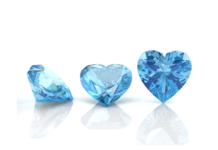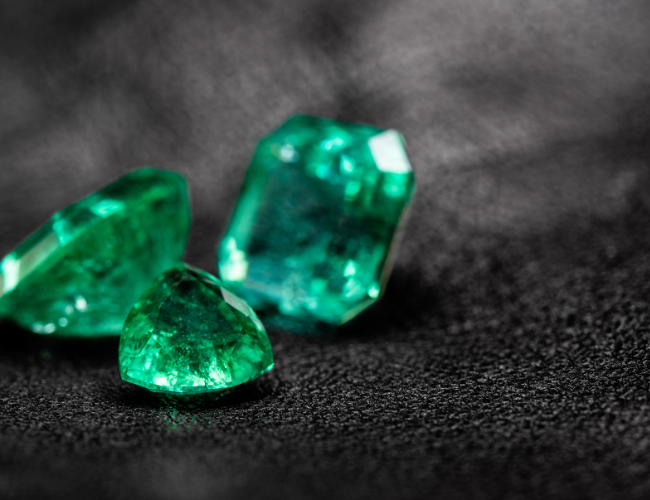Tanzanite is a beautiful gemstone with a unique blue-violet hue that has captured the hearts of many. Discovered in Tanzania in 1967, it quickly became popular due to its rarity, beauty and its potential value as an investment.
In this comprehensive guide, we will explore everything you need to know about tanzanite, including its history, properties, uses, mining and production, comparisons with other gemstones, famous jewelry pieces, caring for it, and controversies surrounding it.
Introduction to Tanzanite
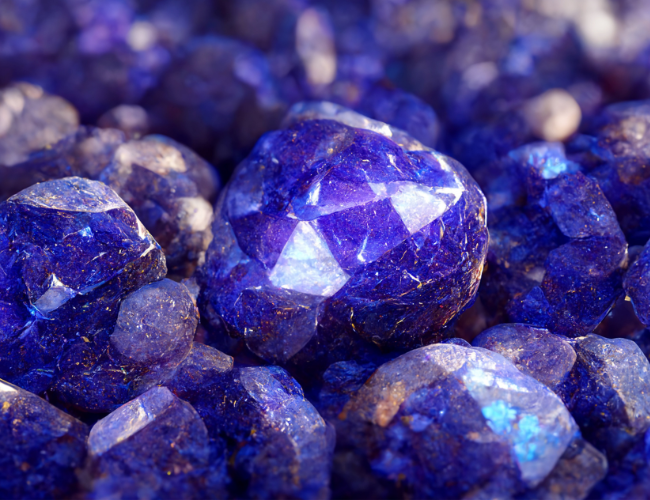
Tanzanite is a blue-violet variety of the mineral zoisite and is found only in one location in the world, the Mererani Hills in Tanzania. Tanzanite’s color ranges from blue to violet, with the most valuable stones having a deep blue hue.
The gemstone was discovered in 1967 by Manuel de Souza, a Portuguese prospector and brought into the limelight by Tiffany & Co., who named it after the country of its origin.
Since its discovery, it has become increasingly popular among consumers and collectors alike due to its stunning blue-violet hue and rarity.
With only one known source, it is considered a rare gemstone, making it highly sought-after by collectors and investors. Additionally, tanzanite’s classification as a December birthstone has helped increase its popularity as a gift item.
Properties of Tanzanite
Physical Properties
Tanzanite is a member of the zoisite mineral family and has a chemical composition of Ca2Al3(SiO4)3(OH), with traces of vanadium that give it its characteristic blue-violet hue. Its crystal structure is orthorhombic, and it has a hardness of 6.5-7 on the Mohs scale.
Tanzanite has a specific gravity of 3.35-3.38 and exhibits pleochroism, meaning that it displays different colors when viewed from different angles.
Optical Properties
Tanzanite has a refractive index of 1.691-1.700 and birefringence of 0.008-0.012, which causes double refraction, where two images appear when looking through the stone. Tanzanite also has a high dispersion of 0.018, which creates fire or flashes of color when light passes through the gemstone.
Cut and Carat Weight
Tanzanite is often cut into various shapes, including round, oval, cushion, and pear. The most common cut used for it is the oval shape, which helps maximize its color.
Tanzanite can range in size from a few points to several carats, with larger stones being rarer and more valuable.
Uses of Tanzanite
Tanzanite is often used in jewelry due to its unique and beautiful blue-violet hue. Its rarity and increasing popularity have made it a popular choice among collectors and investors. Some of the popular uses include:
Jewelry
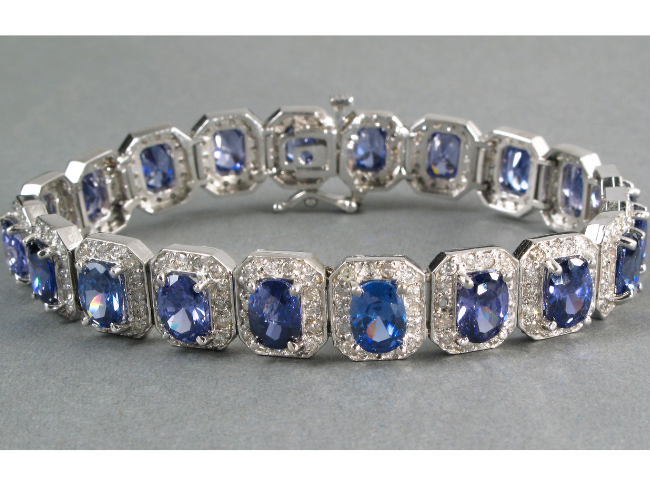
Tanzanite is commonly used in various types of jewelry, including rings, earrings, necklaces, and bracelets. It is often set in gold or silver to enhance its beauty and value.
Healing Properties
Tanzanite has been associated with various healing properties, including calming the mind, reducing stress and anxiety, and alleviating migraines. It is believed to promote spiritual growth and help connect individuals with their higher selves.
Decorative Items
Tanzanite is also used in decorative items such as sculptures and vases. Its unique color and rarity make it an excellent addition to any collection.
Mining and Production
Tanzanite is mined in a small area in northern Tanzania known as the Mererani Hills. The mining process involves extracting from the earth using hand tools and explosives. After extraction, the rough is sorted and graded based on its color, clarity, and carat weight.
Tanzanite is often contaminated with other minerals, making it challenging to extract and refine. The most common contaminants found in tanzanite are quartz, feldspar, and magnesite, which can affect the gemstone’s overall quality and value.
After sorting and grading, the rough it is cut and polished into various shapes and sizes, depending on its intended use. The cutting and polishing process helps enhance the stone’s beauty and value by maximizing its color, clarity, and brilliance.
Tanzanite production is heavily regulated by the Tanzanian government, which ensures that all mining activities are conducted in an environmentally sustainable and socially responsible manner.
Additionally, the government has implemented measures to prevent the illegal trade, which includes strict export controls and licensing requirements for all tanzanite exports.
Tanzanite vs Other Gemstones
Tanzanite is often compared to other blue gemstones such as sapphire and blue topaz due to their similar appearance. However, it differs significantly from these gemstones in terms of rarity, origin, and value.
Sapphire is a more common blue gemstone found in many parts of the world, including Sri Lanka, Madagascar, and Australia. It is often used in jewelry, and its value is determined by factors such as color, clarity, and carat weight.
Blue topaz, on the other hand, is a less expensive gemstone that is readily available and often synthesized.
Tanzanite, on the other hand, is found only in one location in the world, making it a rare gemstone. Its unique blue-violet hue and rarity have made it increasingly popular among collectors and investors, driving up its value significantly.
Famous Tanzanite Jewelry Pieces
Tanzanite’s beauty and rarity have made it a popular choice for jewelry designers and collectors alike. Here are some of the most famous jewelry pieces:
The Queen of Kilimanjaro
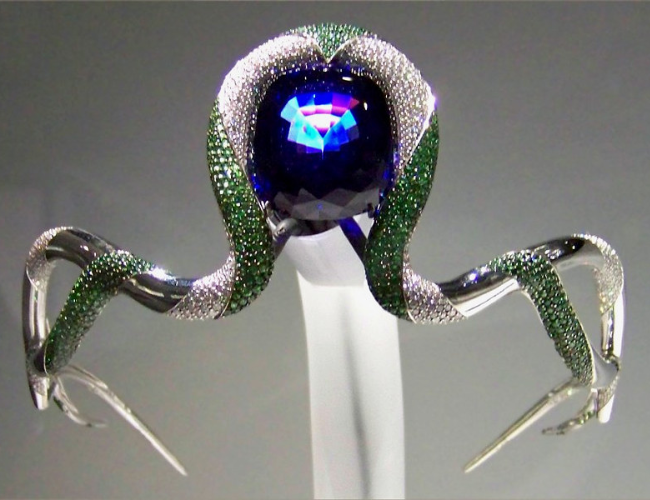
The Queen of Kilimanjaro is a tanzanite necklace created by luxury jeweler Harry Winston in 1985. It features a 242-carat centerpiece surrounded by 803 smaller diamonds, weighing a total of 98 carats.
The necklace was valued at $2 million at the time of its creation and has since become one of the most iconic tanzanite jewelry pieces.
The Midnight Blue
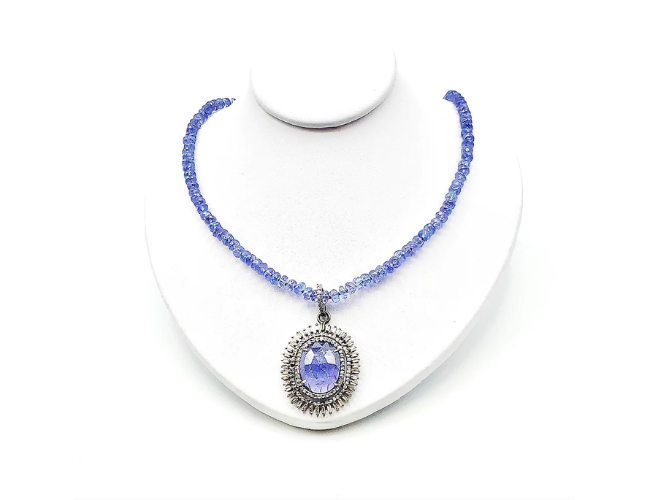
The Midnight Blue is a tanzanite necklace created by luxury jeweler Van Cleef & Arpels. It features a 72-carat center stone surrounded by diamonds and sapphires set in white gold.
The necklace was inspired by the night sky and was valued at over $1 million when it was first introduced.
The Eye of Kilimanjaro
The Eye of Kilimanjaro is a tanzanite ring created by James Currens. It features a 60-carat it center stone surrounded by white diamonds set in platinum. The ring was valued at more than $900,000 and is considered one of the most beautiful rings ever created.
Caring
Tanzanite is a relatively durable gemstone with a hardness of 6.5-7 on the Mohs scale. However, it is essential to care for your tanzanite properly to ensure its longevity and beauty.
To care for tanzanite, it is best to avoid exposing it to harsh chemicals, extreme temperatures, or excessive sunlight.
Additionally, it is important to clean your tanzanite regularly using mild soap and warm water to remove any dirt or debris. Professional cleaning and polishing can also help maintain the stone’s luster and brilliance.
Conclusion
Tanzanite is a unique and beautiful gemstone with a fascinating history and increasing popularity among collectors and investors. Its rarity, beauty, and potential value make it an excellent choice for those looking to diversify their portfolios or add a special piece to their jewelry collection.
However, investing in it requires careful consideration and research, and it is essential to purchase from a reputable dealer who can provide certification and documentation of its authenticity.
Overall, tanzanite’s value and beauty are undeniable, making it a gemstone that is sure to captivate and enchant for generations to come.


